#mula
Explore tagged Tumblr posts
Text
I feel like women or afabs with Tikshna (Sharp/Dreadful) Nakshatras (Ardra, Mula, Jyestha, Ashlesha) are prone to suffering from menstrual complaints. Things like very painful period cramps, heavy flow, highly irregular or unpredictable cycle, extreme pms (pmdd), endometriosis, etc.
51 notes
·
View notes
Text
Observations about how men from each Nakshatra act in dating & relationships 🏹 👩❤️👨 💌

Spilling the tea on men through the nakshatras , thank me later ladies 😌😉😏
Disclaimer : Mostly observations of public figures / personal experience/ what I’ve heard from friends. Feel free to add your experience!!
TW: some of these are really honest or 18+
➽──────────────❥
Ashwini men: very childish no matter how old they are. Can be possessive, kinda psycho with a violent streak.
Bharani men: don’t have much notes about them but from what I heard they are extremely possessive// many girls haves told me they’ve been stalked by bharani men. When their love is unrequited they will never let it go. Traditional and takes care of women. Masculine.
Krittika men: goofy and funny personality. Enjoys being babied by their partner.
Rohini men: know how to be the perfect storybook gentlemen. Prince Charming vibes. Very devotional to their partner. Seemingly innocent but are very s3xual individuals. Lowkey perverts. Can be stalkers.
Strives to satisfy their sexual craving within a relationship but will cheat on their partner to do so. Don’t put anything past them.
Mrigashira men: very intentional with who they chose to date. Specific criteria that only makes sense to them. The type to have a bunch of exes that all look identical to each other.
Seem like big heauxs but are loverboys on the low. They know how to please women on a fundamental level, theee most romantic and thoughtful gifts ever.
They like dating outside of their race, they tend to like girls who are flawless looking. If a Mrigashira man likes you, just know you’re probably a 10.
They can be misogynistic but are simultaneously obsessed with the opposite sex. They are really cute when they’re in love. They love playing mind games though.
Tend to be pretty boys, I notice they often have gay allegations on their reputations. They give bisexual vibes even if they’re straight.
Ardra men: similar to Mrigashira they are lover boys. They are used to dealing with rejection or unrequited love connections. They love hard but have trouble finding the right person for them , causing heartbreak in their love lives.
They are traditional in relationships. They act sad and emotional to get girls to like them. Their sad boy act is authentic sometimes but they are huge fboys too. Emotionally manipulative. Loves doing romantic gestures for their lovers. Very thoughtful gift giver.
Punarvasu men: they are like the ideal husband archetype . Caring, traditional, effectionate, generous. They are naturally feminine and understands what a women needs. However, they are very passive tho and end up being cucks in their relationships.
They attract more assertive women that energetically over power them. Classic Jupiter dominant man trope. Gets played a lot. Often friend zoned a lot too. Has weird fantasies.
➽──────────────❥
Pushya men: traditional and like taking care of a woman. They love pretty b!tches so if a Pushya guy likes you , you’re top tier. They are heauxs tho.
Ashlesha men: have serious mommy issues that get in the way of their romantic relationships. They are innately feminine and struggle expressing their masculinity in a healthy way. Very draining individuals. Tend to be romantic and generous, they are promiscuous tho.
Magha men: enjoys princess treatment from women, they like to be pursued by women. They are withholding with their energy and resources and usually women who date them leave the relationship with less then they started with. Misogynistic tendencies.
Purva Phalguni men: they tend to have all the qualities that women desire from men in relationships. Romantic , protective, generous , they are good at s3x. They are very devoted and romantic in a monogamous relationship. However they often have scandals in their love life that spoil their relationships and reputation.
They are very sexual and will go to great lengths to satisfy their sexual desires. These men have HIGH body counts. Usually involved in taboo relationships.
Uttara phalguni men: seem innocent and orderly but are s3x freaks. They are womanizers and pretend to treat women well to keep a good reputation but can have a negative side to them in private. Pervert-Chad vibes.
➽──────────────❥
Hasta men: cheap and feminine. They lie a lot. Haven’t heard great things about them.
Chitra men: feminine and tend to be himbos. I don’t think I ever met a straight chitra man? If they are straight they like being chased by women. Pretty boys.
Swati men: “Prince Charming takes you on a whirlwind romance” they like impressing women and like to be traditional. They have hot and cold vibes tho most women find impossible to deal with. They are eccentric and flighty. Emotionally unstable.
Vishaka men: will fight for the woman they really like. “Warrior/solider who defends the honor of the princess he’s in love with”. They are thots tho. Have a lot of drama in their love lives.
Anuradha men: falls in love hard. Devotional and romantic, will do grand romantic gestures for their partners. But tend to have addictive personalities and violent tendencies. Can have s3x addiction. Will stalk their love interests. Some have really creepy vibes and weird fantasies. Emotionally turbulent.
Jyeshta men: treat relationships like a game, they like collecting trophies and prizes, so they will date many women at once. They are generous and manly and good at manipulating women. Seemingly enjoy the attention of relationships more than the actual relationship. They like to chase. Lie a lot.
Mula men: traditional and kinda boring. Epitome of “she’s Barbie and he’s just Ken”. They are goal oriented, ambitious and logical. They tend to prioritize their career and desire a “trophy wife” to compliment them. Have stoic personalities and are straightforward and blunt.
Purva Ashdha men: traditional gentleman archetype. Very romantic in relationships. Kinda tend be players though. Pretty boys.
Uttara ashdha men: traditional and fatherly. Usually dates Sun nakshatra/ Leo women or women who have solar qualities like them. They like dating the “female version of themselves”. Doesn’t really understand the complexities of women. Typical “he’s just Ken” vibes.
➽──────────────❥
Shravana men: not really assertive in relationships. Likes hanging with the bros more than devoting self to a relationship. Not the most committed, but can be, but only if it’s connected to their social status. Usually marries their high school sweetheart. Not much notes for them.
Dhanishta men: complex relationships with women. A “bachelor” Nakshatra. Some of them hate women or only have a partner bc it’s socially acceptable. Likes the social status that comes with being with a beautiful woman. Doesn’t have successful relationships till later in life. Best suited towards “friends to lovers” relationships. Some are kinda innocent and virginal. Haven’t heard great d reports about them.
Shatabhisha men: surprisingly act very fatherly in relationships, enjoys taking care of the partner. Not the most emotional in relationships but tend to handle responsibilities well. Likes hanging w the bros prob more than their girlfriend. This nak in general is like the “ghost nakshatra” they will ghost pretty much anyone , and are hard to connect with. Sneaky & secretive. Tall & handsome.
Purvabhadrapada men: acts like a gentleman. huge heauxs. Although when they find “the one” they’ll move heaven and earth for her. Gomez and Morticia Addams vibes. Nonchalant about most relationships but women tend to go crazy for them. Usually has the hots for one women but will entertain many he doesn’t really care about. Makes great fathers.
Uttabhadrapada men: odd personalities in general. Can have trouble connecting with the opposite sex. Don’t have much notes about them. Kinda boring.
Revati men: are generous, assertive masculine. If they want you they’ll show it. Tend to like having a mommy figure as a partner. They are heauxs tho and always have a big roster. Very s3xual individuals. Major players. Immature.

#ashwini#Bharani#krittika#Rohini#mrigashira#ardra#punarvasu#pushya#ashlesha#magha#purva phalguni#uttara phalguni#hasta#chitra#swati#vishaka#anuradha#jyeshta#mula#purvashada#uttara ashadha#purva bhadrapada#shatabhisha#Revati#vedic astrology#astrology#astro observations#future spouse#astrology observations#starsandsuch
1K notes
·
View notes
Text
A Disclaimer!
Hello Lovelies,
As I interpret the charts for those who participated in the game and in the future, I feel inclined to say: I’m not the type of person to leave things out (I do, after all, have Capricorn in the 2nd house).
Sometimes, the person coming into your life may not be who you thought they’d be or even your ideal type.
I say this because your spouse is often a reflection of karma accumulated from past lives, both good and bad. They are a lesson in this life. Just as the 1st house represents your essence, the 7th house mirrors theirs revealing what you attract, what completes you, and often, what you still need to learn.
I welcome all questions (crazy or not.. It takes a lot to shock me). If you’d like to know how I arrived at a conclusion, please feel free to ask and I’ll happily explain.
As always, with love and certainty. Kitty
#astro observations#astro community#astrology readings#spirituality#groom persona chart#astrology#astro notes#future spouse#18+ tarot#spotify#vedic astro notes#vedic astrology#vedic astro observations#vedic chart#vedic wisdom#mula nakshatra#nakshatra#pick a card
24 notes
·
View notes
Text
27 NAKSHATRAS THROUGH MANY FACES
you may start to see the nakshatras next to each other subtlety inheriting the same traits from one another no matter how much in contrast their cycles are. i notice the features progress from the previous nakshatra, without completely losing the passed down blueprint. i realized this as i scrolled through this order of collages. for example, mula and jyestha honestly look the most similar to me (the whole transition from anuradha to purva ashada, actually).



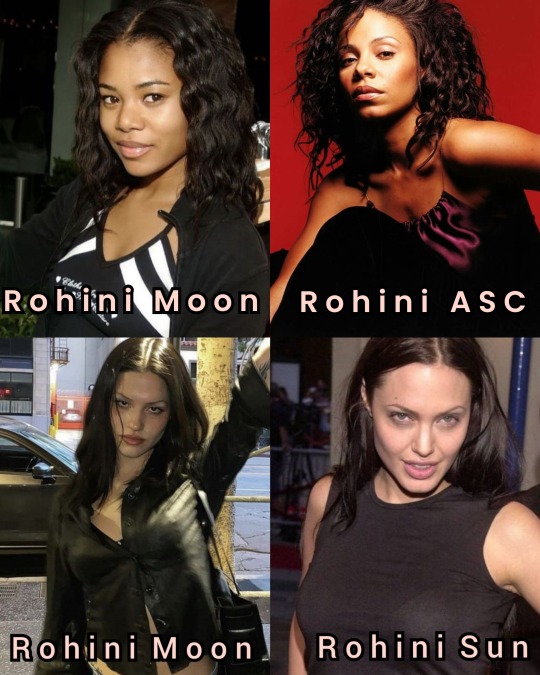

















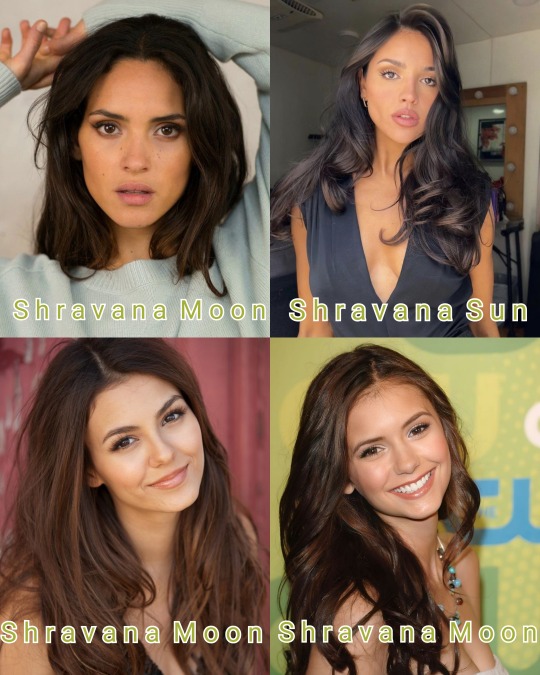

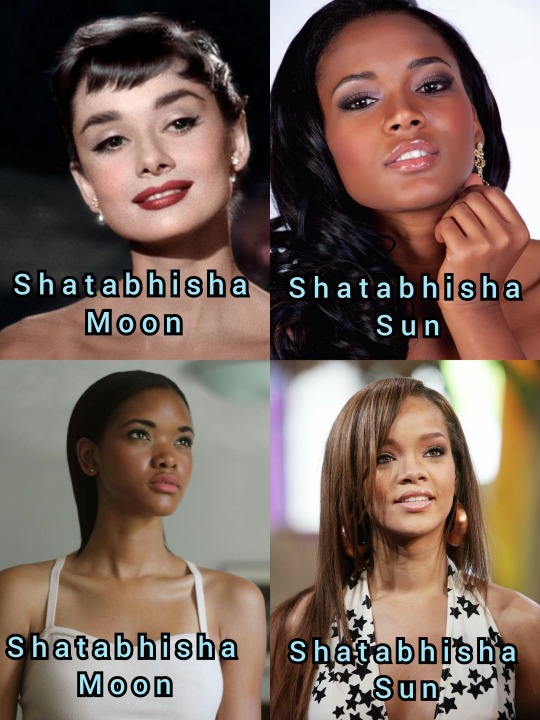



Honourable mention

While Mula natives usually have elongated faces much like Purva Ashadas, it's always interesting to see the different manifestations of physiognomy of the same nakshatras. Had I done that, this thread would have been a lot longer. You would think I should have added Kendall Jenner-Emily Ratajkowski as a pair in the Uttara Bhadrapada section — but notice how they're physically set apart from other natives. There are a variety of ways a nakshatra can look on our faces, I notice this when I'll find a pair of natives who look similar but they are their own set from other natives under the same nakshatra. Keep this in mind, there isn't always a certain look.
Another addition, trine nakshatras can resemble one another. I wanted to add these final pictures to reach the image limit.


sowwrry im obsessed with magha/mula women ^.^
#ashwini#bharani#krittika#rohini#mrigashira#ardra#punarvasu#pushya#ashlesha#magha#purva phalguni#uttara phalguni#hasta#chitra#swati#vishakha#anuradha#jyestha#mula#purva ashada#uttara ashada#shravana#dhanishta#shatabhisha#purva bhadrapada#uttara bhadrapada#revati#vedic astrology#astrology#astro observations
1K notes
·
View notes
Text
lets pull all the unhealed mula girls in one room for a week and see who comes out alive
5 notes
·
View notes
Text
Basic themes of nakshatras
May edit this later, this is as far as I understand and have observed them, and I think it's pretty nice to see them simply.
Ashwini:
Newness, freshness, the unmanifest, speed, energy, vitality, instinct, healing, fast healing, unlimited energy, self-expression, selfishness, blocking outside noise, trusting yourself, self-empowerment, unfiltered actions.
Things that remind me of Ashwini: bees, the sun, horses, two white horses, golden deserts, horses gallopping, honey, long hair flying in the wind, apples.
Bharani:
Love, death, sex, the female, the feminine, limitations, the material, fate, destiny, coming into the body, struggling against limitations, struggling against fate, mind trapped in its own hell because of the inevitable, dealing with the harshness of life, harshness of mothers and mother nature, the hierarchy, privileges and deprivations, desire, going after your true desire, the immortality of the soul, adapting to changes, passion, tragic love, bravery, facing the truth, choicelessness, nessecity, revenge, violence, gatekeeping, reduction, denial of access, conquering your fate, everlasting beauty, immortality, eternal love.
Things that remind me of Bharani: hot pink and black, darkness, roses, the yoni, gateways, keyholes, caverns, boats, rivers, the damsel in distress, fantasy, high fantasy.
Krittika:
Adam, the main character, naming things, language, rationality, precision, sharpness, criticism, the poet, the "it" person, simplicity, cleanliness, expressing oneself, selectivity, the heat, the knowledge, the light, masculine ideals, stoicism.
Things that remind me of Krittika: knives, razors, lighers, sparks, fire, hearth, cooking.
Rohini:
Eve, sugar babies, growth, receptivity, enjoyment, pleasure, unrefined, doted on, subconcious, absorbtion, sharing, union, creation, the youngest daughter, naivete, feeling no shame.
Things that remind me of Rohini: sugar, stickiness, sweetness, heaviness, red, pink, flowers, the A.I(lol).
Mrigashira:
Distraction, realization, fickleness, adventure, running away, chasing, the hunt, excitement, softness, pleasure, altering conciousness, magic substances(iykwim), curiosity, fulfillment, insatiability, teasing.
Things that remind me of Mrigashira: silver threads, deer, green forests, green and blue, running in the woods, alcohol, the moon, Shakespeare's "A Midsummer Night's Dream".
Ardra:
Disillusion, crying, lamenting, awareness of others, awarness of other's expectations, hyper-awarness of everything, intellect, the rational mind, pressures from society, rebelling against society, anxiety, hunting.
Things that remind me of Ardra: tears, water, storms, technology, teenage angst, emo culture, the rain, sad songs, dogs.
Punarvasu:
Mercy, forgiveness, permission, freedom, flying, expansion, gentleness, regrowing, realigning, returning, home, unconditional love and nurture, celebration, peace, peacefulness, centering oneself, sunlight, warmth, fostering, taking care, being taken care of, luck, unlimited fertile space, shelter, genuine kindness, believing in humanity again, cycles, patterns, seeing the cycles and the patterns, prophecies, the oracle, openness, second (and third, fouth...) chances, a comeback.
Things that remind me of Punarvasu: staying at home, pets, plants, cats, gentle rain, a bow and arrows, a target.
Pushya:
Asceticism, routines, self-restraint, servitude, control, self-control, working, working on yourself, patience, simplicity, striving for perfection, nurturing, nourishment, quiet ambition, symmetry.
Things that remind me of Pushya: milk, milkmaids, country life, milking, symmetry, goats, sheep, agriculture.
Ashlesha:
Manipulation, abuse, poison, emotional abuse, blackmail, resorting to everything for safety, protection, pent up energy, the nervous system, purity, water, sensitivity, cleanliness, energetic build-up, tension, restraint, preservation, self-preservation, virginity, feminine tactics, being "mean" for protection, lying for safety, sensuality, mother issues, agitation.
Things that remind me of Ashlesha: the color white, transparent things, cats, poisoning, snow white, Sofia Coppola films, teenage girlhood, ties, strings, knots, snakes.
Magha:
Royalty, power, ancestry, family trees, history, the past, regality, honoring the past, honoring the elders, honoring the authority, religion, tradition, customs, confidence, ego.
Things that remind me of Magha: crowns, thrones, churches, goth culture, smoke, big hair(like the lion's mane).
Purva Phalguni:
Pleasure, enjoyment, being spoiled as the feminine, loving to spoil as the masculine, procreation, sex, leisure, art, holidays, parties, exclusivity, pride, charisma, sexual dispersion, love as a method of self-expression, admiration, directness, active pursuit of your passions, indulgence.
Things that remind me of Purva Phalguni: fruits, eating fruits topless, rose gold color, the "rizz"(lol), the phallus, dramaticism.
Uttara Phalguni:
Favors from friends, family and partners, contracts, beneficial agreements, the perfect wife, likeability, popularity, friendliness, appearing cool, stoicism, beneficial arrangements, gain through partnerships, self-expression through relationships, wife/girlrfiend material, harvest, family associations, marriage associations.
Things that remind me of Uttara Phalguni: the "chads", simplicity, genuine friends, loyal companions, family business, the perfect male stereotype, the "rich heiress running away" trope, wheat, gold, power couples.
Hasta:
The earth, the veiled feminine, manipulation, denial of access, materialism, cheating, everyday matters, empowerment of women, deception, skill, seeking knowledge, wanting to be in control, activism, street-smarts, manipulation of masses.
Things that remind me of Hasta: the hand, Goddess Persephone, skilled hands, thieves, easy money, fairies, witches, scammers.
Chitra:
Crafting, building, perspective, truth, law, gems, sacrifice for your craft, vanity, stereotypes, aesthetics, the truth in stereotypes, building based on the law and the truth, the surface of things, the appearance of things, the substance reflected in the vessel, gossip, cliques, tricks.
Things that remind me of Chitra: the god Hephestos, martian gods in general, jewelry, fashion, make-up, drama, pettiness, the coquette aesthetic, pranksters, Olivia Rodrigo(ig).
Swati:
Space, the cosmos, shifting realities, love, rebellion, alternate realities, possibilities, seeing beauty in everything, inspiration, art, the cosmic egg, creation of the world, creation of worlds, microcosm and macrocosm, freedom through love.
Things that remind me of Swati: video games, the wind, plants beggining to sprout, the sword, technology, the Sims.
Vishakha:
The lightning, snapping, splitting, joining opposites, compromise, marriage, repressed anger, repressed aggression, alter egos, passion, enthusiasm, standing up for yourself and others, repression and then expression, energy, love and hate.
Things that remind me of Vishakha: lighning bolts, Zeus, Thor and other lighning gods, superhero "Shazam", celebrations.
Anuradha:
Friendship, devotion, depth, loyalty, unconditional loyalty, bonds, the occult, sex with love, numbers, gatherings, friend groups, groups, gentleness, humbleness, discipline, seriousness, organizing society, social groups.
Things that remind me of Anuradha: the color burgundy, dim lights, bunnies, "Sex Education" (tv show), sci-fi (for some reason), "The Vampire Diaries" (and very similar teen shows), frat boys, cheerleaders.
Jyeshta:
The battlefield, war, hunger, thirst, insatiability, conquering, the underdog, street-smarts, competition, strategy, extreme independence, mind games, the art of war, survival, ruling, rising above, self-reliance, wisdom, becoming the authority, the eldest, dryness, trust issues, enemies, destroying enemies, outsmarting all enemies.
Things that remind me of Jyeshta: grandmothers, owls, eagles, dry places, flags, marching, chess.
Mula:
Horror, the abnormal, the truth, the core, the center, the absorbing darkness, the black hole, the roots, violence against falsehoods, seeking the truth, seeking the cause, seeking roots, uprooting, chaos, from chaos to order, the unchanging truth, taming beasts, holding to your truth.
Things that remind me of Mula: "Phanton of the Opera", "Twilight", final girls, horror movies, dark murky green, the wilderness.
Purva Ashadha:
Art, beauty, alliances, artistry, ideals, fighting for the ideal, discrimination, exclusivity, philosophies about beauty and art, passion for love and art, attachments, secrecy, luxury, vitality, vigor, going for victory.
Things that remind me of Purva Ashadha: the sea, seafoam, goddess Aphrodite, seashells, mermaids, sirens, fans (the ones you hold in your hand lol), Arwen from LotR.
Uttara Ashadha:
Victory, loneliness, individuality, government, empowerment, independence, being looked up to, composed self-expression, ease, simplicity but regality, confidence, self-assuredness, melancholy and hardships of aloneness but contentment, stoicism, invincibility, unapologetic behavior.
Things that remind me of Uttara Ashadha: earnest people, goddess Nike, mint color for some reason.
Shravana:
Connecting everything, secret knowledge, interest in everything, reading between the lines, subconcious access, extreme sensitivity, holding the humanity together, secret agencies, percieving what others can't percieve, saving humanity, navigating, receptivity, mysticism.
Things that remind me of Shravana: Superman, Geralt of Rivia, Aragorn, King arthur, pathways, footprints, ear, color blue, spies, astrology, outcasts, fringe societies.
Dhanishta:
Celebration, celebrities, fame, visibility, aggression, agitation, action, bringing people together, idols, propaganda, wealth from fame, that which attracts attention, public image, benefits and downsides of fame, openness and flashiness, branding, movement.
Things that remind me of Dhanishta: supermodels, Princess Diana, dancing, rhythmic drums.
Shatabhisha:
Complexities, seeing everything, lurking in shadows, holding the knowledge, secrets, secrecy, hiding, technology, innovation, being ahead of your time, advising but manipulating, society, the collective, trends, the conciousness of masses, propaganda.
Things that remind me of Shatabhisha: midnight sky, stars, the seas, water reservoirs, the circle, the all-seeing eye of Sauron(lol), Lord of the Rings, rings, the movie "Stardust" (the book too), the evil advisor/black cardinal trope.
Purva Bhadrapada:
Notoriety, expansion, uncontrolled expansion, persmissiveness, growth to ruin unless restrained, fighting for your soul, the scapegoat, going against society, getting tested, the point of no return.
Things that remind me of Purva Bhadrapada: gangs, famous criminals, laziness, femme fatales, the grotesque, deserts, werewolves, the black sheep.
Uttara Bhadrapada:
Finding grace, hardships, working, inner strength, steeliness, resilience, patience, restraint, contol, self-restraint and self-control, bravery, honesty, stubbornness, fighting for your truth, perfect control, freedom through limitations, seeking a permanent foundation built on truth, working for the foundation, long-term goals, innocence, purity of soul, stillness, refinement, honor and glory.
Things that remind me of Uttara Bhadrapada: butterflies, clouds, baby blue color, Cinderella, warriors, knights, knight orders, ice, coldness, queens, ice-queen, dragons, water dragons, deep waters, deep sea and its creatures, wings.
Revati:
Ultimate freedom, creativity, wisdom, gentleness, compassion, guiding, herding, fun, laughter, mischief, lightnness, ease, finding peace, reaching the end, enjoying what you have, contentment, nurturing, open-mindedness, conclusions, gratefulness, freedom and free will, having choices, diversity, finding the truth, true wealth, parenthood, the guide, guidance, individuation.
Things that remind me of Revati: shepherds, herding, everything easy and light, the tricksters, the fool, jokes, Loki, The Joker, fish, comedy, the movie "A Fish Called Wanda", caring for everyone and everything, light and soft shades of green and blue.
#vedic astrology#astrology#astrology observations#nakshatras#sidereal astrology#astrology tumblr#astro notes#bharani#ashwini#krittika#rohini#mrigashira#ardra#punarvasu#pushya#ashlesha#magha#purva phalguni#uttara phalguni#hasta#vishakha#anuradha#jyeshta#mula#purva ashadha#uttara ashadha#shravana#dhanishta#shatabhisha#revati
3K notes
·
View notes
Text
Crows and their connection to Ketu and Ketu dominants ☋

In my long, long ongoing period of astrology observation so far, is something that keeps re-occuring day by day that i wanted to share with fellow observants of this crazy world.
Ever wondered why certain actors in films or series are quite often under the guidance of a fellow crow/raven? Mostly serving as 'the eyes or compass' to the persona itself? Or maybe why you have a great interest (or even daily companionship) from these magnificent creatures? Do please keep reading!
Before i even knew about vedic astrology and thus this amazing link between ketu and crows, i always had these beasts follow me arround my neighbourhood, even appearing right in front of me in moments where i felt unsafe. As if they knew and wanted to guard me or something. I even had a tattoo done years ago that said 'raven' in my native language and carried a big raven skull ring on my middle finger.
When i started to learn and delve deep into the vedic world, i not only discovered that i was (ofc) heavily ketu dominant, but also about the beautifull Hindu goddess or 'Mahāvidyā' that rules over Ketu ; our beloved granny 'Dhumavati'.

As you can see, this widow goddess is (almost) always portrayed sitting on a chariotee under the guidance of crows. Sometimes the crows are even portrayed as the ones pulling the chariot or Dhumavati is shown riding them as horses. She stands for all things Ketu-like, think cosmic forces, destruction of illusions, supernatural powers, divine ancient knowledge, salvation or "moksha", cremation grounds, the void that's left after desolation and destruction of the universe, spirits, death, and so on...
Now me being the horror fan that i am, i ofcourse started to see patterns between crows being used in scary movies or series, and certain actors being accompanied by said crows. One thing led to the other, and alot of birth chart investigations later, i can confidently say there IS a connection.
As followed, i'll sum up the actors who are obviously portrayed with crows/ravens in a movie/show with their respective birth chart placement that makes them all heavy Ketuvian :

-Bill Skarsgård - playing Eric in The Crow, who is literally being resurrected by crows and granted healing abillities to take revenge on the ones who killed both him and his girlfriend : Ketu conjunct Sun.

Ian Somerhalder - Damon Salvatore using his crow to spy on Elena : Has Mula (Ketu ruled Nakshatra) Mars in his 1st house.

-Britne Oldford playing blind Fei in The Umbrella Academy, who uses her crows to see and attack others. Highly possible Ashwini (Ketu ruled Nakshatra) moon. Birth time not confirmed.

-Angelina Jolie as Maleficent, using her crow boy Diaval as her spy and loyal companion : has Ketu conjunct her Sun.
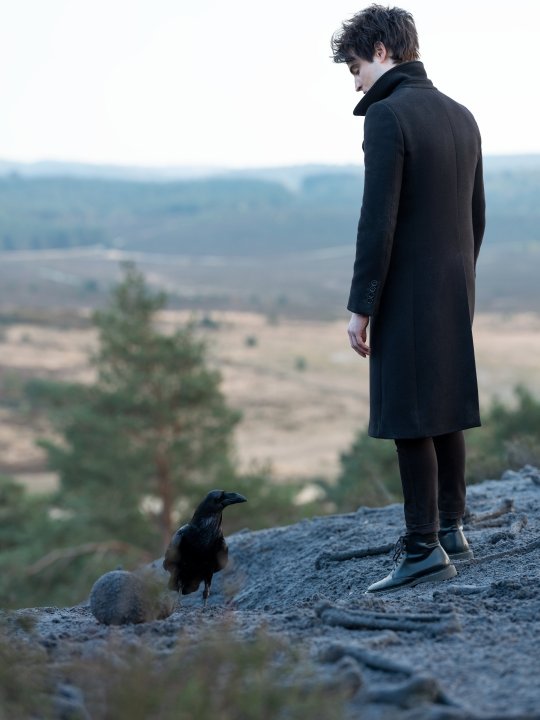
-Tom Sturridge from Sandman, having 2 ravens accompany him as his messengers and spies throughout the series. Mula sun and Ashwini moon.

-Tippi Hedren in The Birds, posing with a raven : has Mula ascendant (Birth time confirmed).
Now coming back to my own personal experience with crows, they still follow me arround everywhere i go. I recon moments where they will literally show me the way when google maps fails me. Whenever i get lost somewhere there is a crow flying in the air in a certain direction that i can just follow to find my way back. I am not making this up.
I've always seen them as my spirit guides, long before i knew about astrology or mythology in general. They are by far one of the most magnificent animals to be flying arround this earth.

As time and knowledge goes on, i"ll probably add more names and planetary aspects to this piece of text. For now i just wanted to share what i already know and stand behind, as well as giving my major preach to these beautiful birds and the Hindu Mythology.
For the ones who know : Do you have heavy Ketu influence in your chart? And do you have special connections with crows/ravens in your life? Do they keep popping up wherever you go or maybe you even have a tattoo or favorite art piece related to them? I'm so curious to hear about others and how they experience this!
#ketu#ketu nakshatras#ashwini#sidereal astrology#nakshatras#vedic astrology#vedic astro observations#vedic astro notes#dhumavati#crows#corvids#mula nakshatra#astrology#hindu mythology
226 notes
·
View notes
Text
Vedic Observations #3
✶⋆.˚ Rohini, Mrigashira, Ashlesha, and Uttara Bhadrapada are very prominent in dancers. They tend to be flexible, fluidity, and hypnotizing type of dancers and I've also noticed that a lot of them can do flips and tricks. It all makes sense since they're all connected to snakes. 🐍


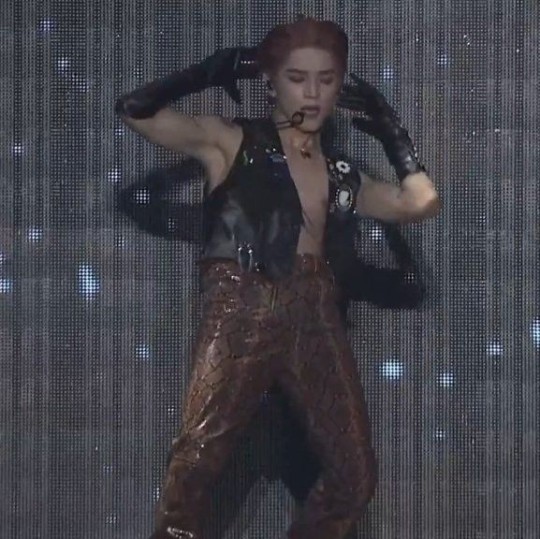
✶⋆.˚ I absolutely love and adore Bharani women so damn much, they're so motherly and protective! My mother is a Bharani Sun and she's highly respected by those close to her and people, even men tried to get with her including past partners. Tifa Lockhart from Final Fantasy VII a Bharani Sun, is a prime example of what I'm talking about. (She's my favorite character and to my mom too!)

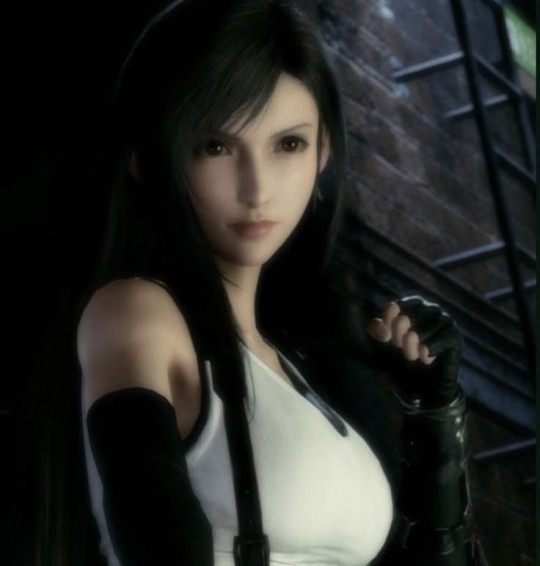
✶⋆.˚ The nakshatras that's the most sexualized in society and in the world are Rohini, Bharani, Ashlesha, Purva Phalguni, and Purva Ashadha. The opposite sex tends be obsessed or lust over their looks, body, and appeal. For example Lugi Mangione whose a Bharani Sun and Purva Phalguni moon is accused of shooting the CEO of UnitedHealthcare has been going viral since 2024 because of his attractiveness and several of Luigi's fans are even going as far to leak his nudes.
✶⋆.˚ When it comes to Martial Arts, you'll mostly see a lot of Martial Artists have Krittika, Rohini, Ardra, Pushya, Ashlesha, Vishakha, Anuradha, Jyestha, Mula, Shatabhisha, and Purva Bhadrapada in their big three.
✶⋆.˚ I calculated the birth charts of 24 popular fashion designers and the four nakshatras that tied 1st for Sun, Moon, and Ascendant was Shatabhisha, Rohini, Ashlesha, and Bharani.
✶⋆.˚ Chitras are candidly one of the most fashionable nakshatras out of the bunch. They're very good at detail and knows what goes together or not. It's not surprising that a ton of fashion designers have Chitra in the three, big six, along with Rahu and Ketu. These are the kings and queens of designing.
✶⋆.˚ Dhanistha natives are not only famous but also trendsetters too! Even after their death they still remain memorable and talked about all around the world, *ahem* Marilyn Monroe a Dhanistha moon. They really are iconic stars and beauties, Dhanistha men and women are the definition of walking celebrities even if they're regular people others will see them as someone to be admired.
✶⋆.˚ Rohini is the epitome of beauty and magnetism. This is truly one captivating star, these natives are so beautiful and effortlessly seductive. They naturally attract attention from everyone and have people simping over them all the time. Rohinis are always chosen for things and tend to be exceptionally popular among masses for their sex appeal, charm, and enchanting looks. (Also Spellbinding Eyes! 👀✨️)
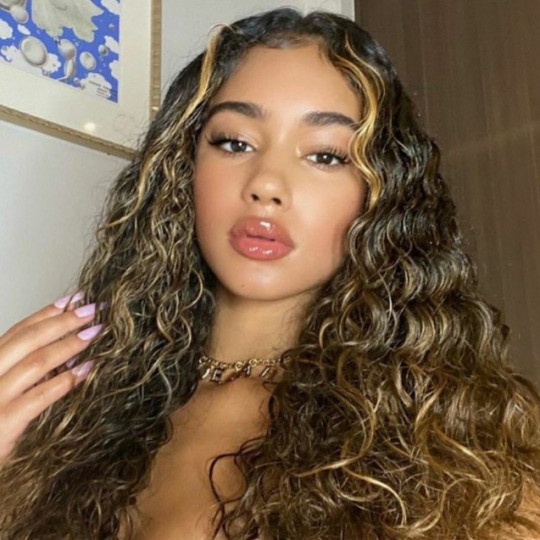
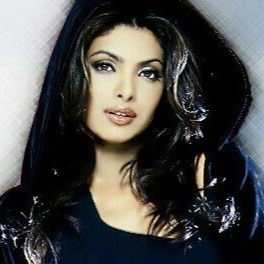

✶⋆.˚ Moon ruled nakshatras (Rohini, Hasta, and Shravana) posses a natural talent in gathering everyone together just like the Moon itself, it's mesmerizing glow attracts billions with ease. Millions of individuals easily looks up and admires them to a large amount that it can cause cult like followings, they have a massive influence over the masses and this can lead to big time fame.
#vedic astro observations#vedic astro notes#bharani#krittika#rohini#mrigashira#ardra#pushya#ashlesha#purva phalguni#hasta#chitra#vishakha#anuradha#jyestha#mula#purva ashadha#shravana#dhanishta#shatabhisha#purva bhadrapada#vedic observations
508 notes
·
View notes
Text


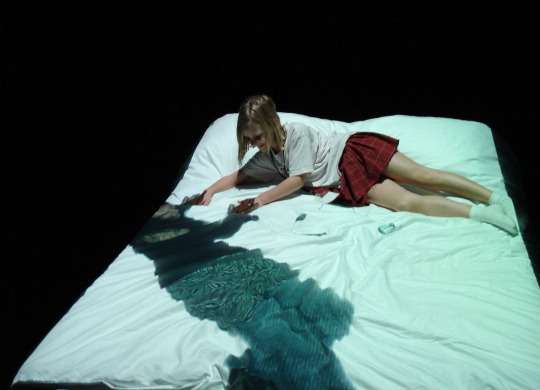
astro observations #4
- The idea that your north node = fate and destined path doesn’t feel accurate. After all, north node aka rahu is literally illusion and material obsessions and is also considered a malefic in multiple astrological circles. I find it to be more of an indicator of what our fantasies and guilty pleasures may be.
- People with prominent Leo/Aquarius axis tend to focus their astrological study on their personal placements from what I noticed. As they get deeper however, they start to venture into what other placements might be like. But for most part, the focus tends to be on their placements first.
- 7th/8th house placements tend to be the opposite, being very curious to know why people around them, their role models, and others in general act the way they do and therefore using astrology to understand that
- 9th house placements are the ones who study every placement just for the sake of it or out of curiosity, some 3h placements might also
- Taurus + Leo = curly hair
- Taurus placements, especially if aspecting Lilith or mars or coupled with mars ruled placements, tend to be into vampires bc throat (Taurus) and blood and injury (Mars) as well as the seductive/taboo nature of vampires (Lilith)
- 3h Saturn/ 3h in Capricorn might take quite a while to get their drivers license
- What others tend to say about u : 3h from 7h : aka the 9h.
e.g. 9h in Aquarius : people talk about how you’re unique, popular or friends with a lot of people, humanitarian. They might also discuss how you’re eccentric, disconnected or apathetic.
- Whatever houses are ruled by Venus in your chart can give you an idea of how your relationships impact you as well as how you behave when in a relationship.
e.g. Libra risings have Venus ruling their first and eighth house, they tend to have very transformative relationships that end up changing them completely. They might also benefit from personal glow-ups during certain relationships thanks to their partner’s resources. Opposite can be true with weak Venus or malefic influence on the houses of Venus.
- 8h is underrated as an intelligence indicator. That’s the house of research, uncovering mysteries, and finding out the hidden. If one of the most common intelligent tropes -detectives and mad scientists- work within 8h themes, that is for a reason
- 6th house Lilith could indicate suffering from eating disorders.
- I noticed that even people who don’t know anything about astrology (sometimes especially them lol) tend to have markers of their signs all over their online presence. my ardra stellium friend has pearl as his username (ardra is symbolized by the diamonds and jewelry), a lot of shatabisha (especially the men) like wearing bracelets and rings (reminiscent of the empty circle that symbolizes shatabisha) etc.
- 10th house could signify what traits do you have that are different or stand out from ur family. For example, Jupiter in the tenth house could mean different beliefs, maybe a taller build compared to your parents, I also see it as which members of your family do you resemble the most. 10th house Jupiter might look like their grandparents while 10th house sun their dad, and moon their mom etc.
- Saturnian tend to be gatekeepers because Saturn = scarcity and limitations.
- 4h mars/sun could indicate having more close male friends n vice versa for 4h Venus/moon.
- Sun nakshatras and ashwinis look really good when the sun is shining on them. They might be particularly fond of golden hour selfies.
- 11h synastry can indicate starting a business together, whether it’s benefics or malefics will indicate if the business will succeed or not.
- Lacking aspects to the luminaries can mean feeling disconnected from your parents, as if there’s a certain distance between you and them that can’t be bridged. An empty 3h + unaspected 3h lord can also indicate feeling that way towards your siblings.
- A strong Mars + Venus = good dancer. Also prominent dhanista and snake yoni Nakshatras (Rohini, mrigashira).
- Anna Popplewell and Nancy ajram look similar and I found they have quite the similar placements besides both having nodal (Ardra/Mula) and Saturnian (Uttara Bhadra/Anuradha) influence.






Nancy Ajram (Top) : Jupiter in Anuradha, Sun DK in the first Degree, Sun and Mars in Krittika, Ketu in Mula.
Anna Popplewell (Bottom): Venus in Anuradha, Sun DK in the first degree, Jupiter in Krittika, Sun, Mercury, and Saturn in Mula.
this is it for today <3 please don’t hesitate to share if any of this resonates!
#astro observations#astro notes#astro placements#astrology notes#astrology observations#vedic astro notes#vedic astrology#ardra#ashwini#shatabhisha#mula#7th house#8th house#aquarius#leo#9th house#taurus#10th house#10h jupiter#11h synastry#saturn nakshatras#sun nakshatras#3h saturn#6h Lilith#4th house#aries#Libra risings
897 notes
·
View notes
Text
Manifesting Energy
Sun Nakshatras: Love and Patience
Moon Nakshatras: Making deals with Gods, Goddesses (Ex: Hekate)
Mercury Nakashatras: Your own energy. Just do it.
Jupiter Nakshatras: Use your mind. Think it, daydream it, visualize it.
Saturn Nakshatras: Being apart of a collective. (Ex, being apart of a church, being apart of a well known family, a well known sports team) You need to be apart of something for you to do something on your own.
Mars Nakshatras: Just looking at it. Make a vision board and hang it up.
Venus Nakshatras: Being delusional. Tell yourself a story and it'll eventually become true.
Rahu Nakshatras: Just live it. (You want to be a teacher? Live how a teacher would, etc etc)
Ketu Nakshatras: Being a hater lol. (You want someone to bring you water? Fully hate the idea of someone bringing you water)
DONATIONS/KO_FI
#manifesting#manifestation#rahu#venus#mars#jupiter#nakshatras#ashwini#uttara bhadrapada#ketu#sidereal observations#vedic astrology#astro notes#astro observations#astrology#nakshatra#sidereal astrology#askkerinnavedic#vedic observation#vedic notes#magha#mula#revati#shravana#rohini#27 lunar mansion
654 notes
·
View notes
Text
Top 17 Most Mysterious Nakshatras

Purva Bhadrapada: The Dark Magician. Natives' boiling energy and their curiosity about the other worlds make them extreme in their spiritual practices. Depending on their level of maturity, they can fall into harsh malevolent practices. Natives usually have a lot of occult knowledge and most importantly, they can contact otherworldly entities, especially the aliens. They are connected to graveyards and some saints.
Ardra: The Ascetic Monk. Natives' power lies in their intense emotions. Their emotions can make them so tough they can ignore physical pain. They are healers, hermits. They tap into the energy of nature, mostly mountains and forests. They can predict the weather, they are able to bring rain. They can perform extreme spiritual practices.
Ashlesha: The Hypnotic Witch Queen. Sensitivity is natives' power. They can sense anything in their surroundings, hence a strong intuition. They can dive into the human soul and spot any weaknesses. They can read your mind. They are very magnetic. Natives should trust their Vastu/Feng Shui abilities and their healing skills.
Mula: The Exorcist. Natives have a strong root chakra, which makes them invincible. Thus, they are more sensitive to the telluric currents, the caves, the ruins and the ancient temples. They often deal with negative spirits and when they are well prepared, they can expel them. Natives are usually interested in the occult and they often do research in that field.
Shravana: The Wise Wizard. Natives' gift lies in their connection to the Source and their absorption ability. They can get glimpses of their past life memories, which help them in their current lifetime. For example, they can remember some bits of a language they used to speak in a previous life and use it in their job today. They can perceive guiding voices and see spirits. They easily sense their environment.
Shatabhisha: The Druid. Natives' mind is their strength. They are highly connected to nature, hence their healing abilities. They see things people do not: they are excellent at discovering occult secrets through many disciplines, such as medicine or astrology. They can invent new ways in their field, such as healing naturally. They can get involved in secret societies.
Jyeshtha: The Sorcerer King. Natives know the power of the occult too well. If they are scared of it, they cover themselves with protective talismans and do specific prayers. Or, if they do not, they perform strong rituals or they get involved in occult societies in order to gain power... But there is a price to pay.
Magha: The Archmage King. Natives' strength lies in their connection to their ancestors and their knowledge. They can dream of their ancestors and receive their messages. But because they can contact them, they can have out of body experiences, sometimes they can even have a near-death experience. Natives usually chase spiritual knowledge and occult powers and they end up mastering them very well.
Hasta: The Fortune Teller. Natives' power lies in their hands and words. They can be very good at palmistry, tarot card reading, healing (especially with hands)… Their mantras and spells are always highly effective.
Uttara Bhadrapada: The Mystic. Natives' strength lies in their connection to the atmosphere and clouds. That is why they are able to bring rain. They tap into rain and water's energy. Their spiritual practice is deep and their devotion to their Gods make them stronger... And threatening if they choose the wrong side.
Revati: The Psychic. Natives' power lies in their connection to the other worlds. They can have astral traveling experiences; they can contact the dead, the divinities; they can receive messages from beyond and become prophets.
Ashvini: The Healer. Natives' strength lies in their vitality and their connection to the other worlds. When they are in the medical field, they can perform miracles. They can discover secrets on life and immortality. They can be good at channeling spirits.
Bharani: The Ancient Patroness. Natives' power lies in their connection to the other worlds and their raw strength. They can connect to other planes and ghosts. Natives feel linked to the pyramids (in Egypt and/or from other places), some tombs of saints and the primordial feminine energy (shakti).
Purva Ashadha: The Regenerative Healer. Natives' strength lies in their incredible restoring vigor. Their energy is such that they can invigorate anyone around them, as well as crumbling activities. Natives do wonders with a pendulum.
Anuradha: The Seer. Natives’ power lies in their faculty to see and receive light as well as perseverance. In the deepest mud of people’s minds, using a coded chart, natives can find out people’s benevolent nature and their shameful secrets. Natives are hard working and patient. They keep so many secrets. That is why they can be very good at numerology, astrology and other occult sciences.
Dhanishta: The Element Master. Natives' strength lies in the natural elements and directions. They can become experts in Vastu or Feng Shui and fix a home. They are good in alchemy, reading pulses and other more spiritual practices.
Purva Phalguni: The Enchanted Fairy. Natives' power lies in their huge amount of luck. A problem happens, a native smiles and it is gone. They can be interested in the occult, usually the traditional knowledge, such as mantras, astrology, and palmistry.
#astrology#vedic astrology#jyotish#sidereal astrology#nakshatras#astro#astro community#astro notes#vedic astro notes#purva bhadrapada#magha#uttara bhadrapada#purva phalguni#hasta#anuradha#jyeshtha#mula#purva ashadha#shravana#dhanishta#revati#ashvini#bharani#ardra#ashlesha#paranormal#palmistry#tarot cards#mantra#occult
868 notes
·
View notes
Text
SHIVA’S ENTOURAGE:
Ardra, Mula, Purvabhadrapada and Uttarabhadrapada

The truth-bringers, psychics, mystics and occultists.
All of these Nakshatras connect back to Shiva, but how?
Let’s learn more about the lore surrounding the deity Shiva, and how he is the key thread between all of these Nakshatras.
THE ORIGINS OF SHIVA:

In Vedic lore the big 3 creator gods are: Brahma, Vishnu, Shiva. They are thought to create the reality we live in now.
However, Shiva wasn’t always known as “Shiva” here’s how he came to be:
Firstly, Brahma was creating the world and needed help, so he created more people to help him with the task of creating earth.
However, once these people were in existence, they disobeyed him, dismissed his commands, and pursued their own journeys.
This made Brahma angry, so angry that his brows furrowed together so hard that and little purple baby-like enitity popped out from inbetween his eyebrows.
This entity that appeared is known as “Rudra”.
Brahma named him “Rudra” which means “howler” “the crier” “the one who howls”. Since when he was born he was screaming and howling. He was born out of anger and distress.
However, Rudra went on to help Brahma in his task of creating the earth. Rudra began populating Earth with people. Except the “people” he populated it with were angry monster-like creatures. He was causing destruction inadvertently.
So Brahma told him he needed to control his anger and he that could master himself through the discipline of yoga.
So Rudra takes his advice and goes on a pilgrimage to the top of a mountain, where he mastered the practice of yoga and then returns to Brahma.
Upon returning to Brahma, Brahma gives him the new name “Shiva” which means: “calm, benevolent, peaceful”.
Through his evolution he maintained his true essence of being a “destroyer” but ultimately learned how to control and direct his energy in a positive way. His tendencies are to destroy in the name of truth, knowledge and enlightenment.
It’s important to note that Rudra is the same deity as Shiva, just in his raw, unfiltered form.
RUDRA’S VIBE:

Rudra is the fierce and powerful deity associated with storms.
He is the untamed version of Shiva.
He is known to be angry, wild, destructive and fierce.
Whilst other deities have luxurious dwellings, Rudra lives in crematoriums and graveyards. He’s thought to be a vagabond, he doesn’t have a singular resting place. He is considered the outcast amongst other deities.
His physical appearance is said to be unkempt and wild, uncombed hair, smeared face with crematorium ashes.
Rudra doesn’t care about the superficial desires, yet constantly strives to discover spiritual truth, discarding whatever doesn’t align with that truth.
He strives to destroy falsities and illusions.
This is not a deity known to bestow prosperity or grants superficial wishes. He’s a deity that’ll destroy illusions that reveal truth.
He won’t maintain the comfort your delusions bring you. He will pull you out of them, violently.
He’s interested in the deeper parts of life, the occult, mysticism, philosophy etc.
*KEY NOTE: Rudra has 11 avatars that manifest different forms of his energy. *
———————————————————————
HOW ARE THESE FOUR NAKSHATRAS CONNECTED?
Ardra, Mula, Purvabhadrapada and Uttarabhadrapada.

Remember Rudra/Shiva are the same thing, just different forms. Rudra has 11 avatars.
ARDRA’S deity is: Rudra
Rudra is the fierce form of Shiva
MULA’S deity is: Nirriti
Nirriti is thought to be a similar form of Rudra
PURVABHADRAPADA’S deity is: Eja Ekapada
Eja Ekapada is one of the 11 Rudra avatars
UTTARABHADRAPADA’S deity is: Ahir Budhya
Ahir Budhya is one of the 11 Rudra avatars

ARDRA, MULA and THE BHADRAPADAS: COSMIC SOULMATES. 🪐
You’ll find that these Nakshatras are always bound together, in relationships, friendships and family lineages. Where one of them exists, they are somehow involved with the other.
Check If you have Mula, Ardra, Purvabhadrapada or Uttarabhadrapada in your big three or as Atmakaraka, then you are attracted to other individuals with this same placements.

THEIR COMMON PURPOSE IN LIFE:
➤ These individuals all hold a common purpose: bringing truth to the world.
➤ These individuals struggle especially in early life. They usually have to overcome some harrowing obstacles before achieving true success in life.
➤ They are burdened with the ability to see beyond the veil, so much so that it alienates them from others, due to the knowledge they possess.
➤ They are often outcasted amongst their peers, they are seen as different, unusual and mystical. They don’t fit into mainstream society.
➤ Metaphorically they are the shamans dwelling on the outskirts of society, meant to guide others bc of the truth they hold.
➤ They help to wake people up, and elevate society with knowledge and truth.
➤ They are meant to be teachers.
➤ Much like Rudra/Shiva himself they strive for truth often ignoring the superficial pleasures in life. They prefer not to get drunk in the illusion of Maya but they prefer getting to the bottom of things, ripping the veil away.
➤ From a young age, they intuitively know there’s a deeper meaning life, and they strive to discover it.
➤ Getting to the root of it all, because for them life is meaningless without truth.
➤ They each have a destructive tendencies each in their own ways. But their destructiveness has purpose to it, leading to transformation of their lives and those around them with the behavior.
What Ardra, Mula and The Bhadrapadas all have in common:
Truth seekers
Students of the occult
Masters of occult knowledge
Prioritizes spiritual path in life
Spiritualists
Knows what it is like to be outcasted and rejected by peers
Spiritually powerful
Psychic abilities
Teachers
Knowledge- bringers
Loners




#vedic astrology#ardra#mula#purva bhadrapada#uttara bhadrapada#nakshatras#shiva#rudra#astro observations#astrology observations#Gemini#Pisces#sagittarius#Aquarius#starsandsuch#2025
490 notes
·
View notes
Text
The Essential Fundamentals of all 27 Nakshatras
Every Nakshatra has a specific theme that represents what it is about. This post embodies short descriptions of each Nakshatra to give a quintessential understanding of their natures.
Ashwini Nakshatra is revered as "The Star of Beauty and Speed."
Ashwini is known giving natural strength, health, and beauty. Natives of this Nakshatra possess a quick, energetic nature that infuses them with a vibrant zest for life. Those influenced by Ashwini have a gift for enhancing the beauty and speed (vitality) of others through medicinal miracles and infusing life into them against all odds and reason.
Bharani Nakshatras is revered as "The star of bearing and supporting new life."
Bharani is known for its nurturing qualities. This Nakshatra symbolizes the act of giving birth to creativity and newness into life. Those born under the Bharani are believed to possess a deep sense of responsibility and dedication towards nurturing a creation's existence, even if it entails personal sacrifices and struggles. Much like the process of childbirth itself, Bharani represents the laborious journey of bringing forth newness into the world, characterized by both the pain and joy that accompanies such a transformative experience.
Krittika Nakshatra is known as "The star of insight."
Krittika natives possess a unique talent for breaking down complex concepts into smaller, more manageable components. With a keen eye for detail, they are able to unravel intricacies that may elude others. These individuals excel at dissecting information and gaining a thorough understanding of intricate subjects. Their precise and methodical approach allows them to navigate through intricate systems with ease, making them masters of subdividing the most challenging of tasks.
Rohini Nakshatra is known as "The star of procreation, creativity, and fertility."
Linked to the moon and the deity Brahma, Rohini embodies the daughter of Lord Brahma, who was the source of his inspiration to bring life into the world. Individuals born under this nakshatra are believed to have an exceptional imagination, brimming with creative thoughts and ideas that foster life and innovation.
Mrigashira Nakshatra is referred to as "The star of searching."
Mrigashira people are often described as eternal seekers, perpetually in pursuit of something just beyond their grasp. They embody a relentless curiosity and an insatiable thirst for knowledge or pleasure, propelling them to explore every possible avenue in their quest for fulfillment. Like a restless deer darting through a dense forest, Mrigashira natives are renowned for their agility in navigating through ideas and concepts, always in motion as they chase the next spark of inspiration or joy.
Ardra Nakshatra is known as "The star of destruction."
The karmic journey of those born under this Nakshatra is characterized by a unique energy dedicated to paving the way for new growth and transformation. Their karmic life aim finds themselves dismantling, destroying, and unlearning old patterns, making room for fresh opportunities and creativity to thrive. Similar to a powerful storm that sweeps away debris, Ardra natives excel at breaking down barriers and obstacles, moving forward with clarity and purpose. Their presence is dynamic and intense, yet ultimately acts as a catalyst for positive change and evolution.
Punarvasu Nakshatra is known as "The star of repetition."
Much like a recurring cycle, those born under this Nakshatra karmically find themselves revisiting situations or opportunities, each time bringing a fresh perspective or renewed energy. These natives living the lesson of learning about how smaller patterns fall within larger ones.
Pushya Nakshatra is often referred to as "The star of devotion and blossoming."
Pushya embodies the significance of maintaining steadfast faith and commitment to core values. This nakshatra imparts the karmic lesson that when we truly believe in our cause, we are on the journey to flourishing and growth. Much like a delicate flower that requires devotion and care to blossom, our dedication to our beliefs and values can guide us towards a life abundant with fulfillment.
Ashlesha Nakshatra is revered as "The Star of Embrace."
Ashlesha is renowned for its deep emotional attachments and intense desires. Individuals with Ashlesha Nakshatra exhibit a fervent clinging to what they love, never letting go easily. There is a profound sense of responsibility towards their loved ones, demonstrating loyalty and dedication that is unmatched.
Magha is known as "The star of gifted power."
The karma of Magha is associated with qualities and abilities that are inherited from one's ancestral family line. Those born under Magha are believed to possess innate gifts and head starts in life, due to the progress they have carried over from a past life. These gifts can be bestowed on them from their family line and passed down. In general, these individuals may find success and recognition coming to them more easily than others, and may excel in areas where they invest minimal effort.
Purva Phalguni is celebrated as "The star of love, romance, and the foundation of good relations."
Purva Phalguni imparts the karmic lesson of recognizing the importance of romantic pleasure while also respecting all aspects of life beyond mere sensual satisfaction. It underscores the value of practicing nobility and exercising restraint to prevent succumbing to excess, lust, and the ensuing suffering that can result from neglecting these virtues.
Uttara Phalguni is frequently hailed as "The Star of Commitments and Marriage."
Uttara Phalguni is linked to karmic lessons focused on embracing love amidst the challenges and ups and downs of unions. Individuals born under Uttara Phalguni are believed to excel at resolving differences and fostering enduring love and intimacy in their relationships.
Hasta is known as "The star of awareness and dexterity."
Hasta Nakshatra symbolizes the deep connection between the mind and hands. It emphasizes the importance of being present and fully engaged in the reality of the world around us. Through karmic lessons, Hasta teaches us that our hands have the power to create wealth and resources through our skills and expertise. It inspires us to wake with the light each day, filled with determination to tackle our goals and ambitions.
Chitra Nakshatra is renowned as "The star of brilliance."
Those of Chitra Nakshatra are distinguished by its capacity to generate complex and innovative designs. Individuals born under this nakshatra are endowed with an innate talent for crafting detailed and multifaceted artworks, whether in technology, architecture, or any other design field. They excel at refining and enhancing existing concepts, demonstrating their profound knowledge and expertise in these areas.
Swati Nakshatra is often referred to as "The star of becoming an individual."
Swati embodies the significance of departing from societal norms and expectations to fully embrace one's distinct identity. This nakshatra inspires individuals to carve their own path and stand out amidst the crowd, even if it requires defying the norm. It serves as a reminder that while nurturing our individuality and uniqueness is crucial, we must also acknowledge our place within a broader collective and aim to foster a connection with the world around us.
Vishakha Nakshatra is revered as "The star of being one-pointed."
Vishakha Nakshatra people are distinguished by their unwavering dedication and decisiveness, steadfastly adhering to their chosen path and goals. Similar to a sailor navigating through turbulent waters, those influenced by Vishakha Nakshatra remain on course until they reach their destination, employing all necessary means to surmount obstacles and challenges.
Anuradha Nakshatra is renowned as "The star of deep devotion."
Those of Anuradha are propelled by an intense sense of love, passion, and commitment, viewing these values as the pinnacle of existence. Tenderness, romance, and affection act as the compass in their lives, molding their actions and decisions with genuine sincerity. Those with Anuradha Nakshatra deeply respect agreements, promises, and laws, understanding the significance of adhering to these values across all aspects of life.
Jyestha Nakshatra is renowned as "The star of the foremost and best."
Jyestha people are often driven by a strong desire for power, prosperity, and a lifestyle filled with enjoyment. They possess a natural strength and determination to excel, using their skills and strength to protect their loved ones. However, the karmic lessons associated with Jyestha Nakshatra caution against becoming overly proud of achievement and position, as this can ultimately lead to their downfall.
Mula Nakshatra is revered as "The star of roots and origins."
Mula represents a profound spiritual journey and a quest to grasp the true essence of existence. Individuals born under Mula are motivated to explore beyond the surface, researching and searching towards revealing the hidden truths of the universe. They are compelled to shatter illusions and liberate themselves from the constraints of superficiality, aiming to establish a connection with the fundamental essence of everything.
Purva Ashadha is renowned as "The star of invincible waters."
Purva Ashadha Nakshatra symbolizes the flowing waters of immense strength and power. These waters have the capability to slice through and obliterate anything in their path, yet they also radiate a soft and cooling essence that renders them both pleasant and bearable.
Uttara Ashadha Nakshatra is often referred to as "The star of ultimate invincibility."
Uttara Ashadha is a true karmic powerhouse, radiating an aura of unbeatable power and strength. Individuals born of this Nakshatra tap into a wellspring of qualities and skills bestowed onto them by the divine. They are driven by an ambitious, relentless drive, pooling resources and gathering social support whenever necessary to achieve a vision or common goal.
Shravana Nakshatra is renowned as "The star of listening."
Shravana embodies the significance of acquiring knowledge and understanding through attentive listening. Individuals born under this nakshatra are endowed with the karmic gift of receptiveness and open-mindedness, enabling them to broaden their wisdom and power. By engaging in active listening without prejudice, they can gather invaluable information and insights, which in turn fosters personal growth and success.
Dhanishta Nakshatra is revered as "The star of sound and action."
Dhanishta personifies the profound karmic insight that the power of sound is of utmost importance. Those born under this nakshatra hold the conviction that all that is heard, received, and comprehended through listening should be applied practically. This belief underscores the significance of not just listening attentively but also acting on the insights gained, going on instinct, and not questioning what must be done.
Shatabhisha Nakshatra is revered as "The star of hundreds of healers or cures."
Shatabhisha Nakshatra is linked to the karma of healing and curing society through enigmatic distant methods of observation. It is regarded as a guardian, overseeing all activities, and evaluating individuals or society with fair and objective perspectives. Individuals born under the influence of Shatabhisha Nakshatra possess the ability to initiate movements and drive change in the face of injustice, should it be deemed worthy of correction.
Purva Bhadrapada Nakshatra is often referred to as "The star of the blessed step."
Purva Bhadrapda is believed to guide individuals towards spiritual enlightenment by highlighting the transient nature of physical existence. Those born under this nakshatra embark on a journey towards understanding the impermanence of life, which leads them to value moments and experiences deeply, recognizing the preciousness of time. This insight enables them to view the world with a critical eye, allowing them to fully embrace the present moment and focus on actions that foster personal growth and the realization of ultimate wealth - which is the recognition of life's fleeting nature.
Uttara Bhadrapada Nakshatra is revered as "The star of the latter blessed steps."
Uttara Bhadrapada embodies a deep karmic acceptance of life's inevitable endings. Individuals born under this nakshatra grasp the spiritual importance of embracing change and transformation, recognizing that death is an inherent part of life. This acceptance fosters a profound sense of inner wealth and prosperity, as people fully embrace the new state of being that emerges from relinquishing the old.
Revati Nakshatra is revered as "The star of prosperity and wealth."
Revati carries significant karmic significance in the pursuit of resources, highlighting the importance of steering clear of greed and fostering compassion by sharing wealth with those in need. Individuals born under this nakshatra are believed to possess a unique ability to guide the lost, utilizing whatever resources they have at their disposal. By aiding others in achieving their goals and getting to a destination, Revati individuals can, in turn, accumulate greater prosperity through "good karma" earned.
Nakshatra Notes Masterpost (Link collection of more detailed paragraph descriptions of all 27 Nakshatras, both positive and negative traits)
#astrology#vedic astrology#nakshatra#naksahtras#ashwini#bharani#krittika#rohini#mrigashira#ardra#punarvasu#pushya#ashlesha#magha#purva phalguni#uttara phalguni#Hasta#Chitra#Swati#Vishakha#Anuradha#Jyestha#Mula#Purva Ashadha#Uttara Ashadha#Shravana#Dhanishta#Shatabhisha#Purva Bhadrapada#Uttara Bhadrapada
822 notes
·
View notes
Text
27 NAKSHATRAS THROUGH MANY FACES
note that the way i have placed some of these natives is by my own speculation alone, as not everyone has a verified, or available, birthtime on the internet. but everyone placed by their ascendant has a verified birthtime.
the female version: here



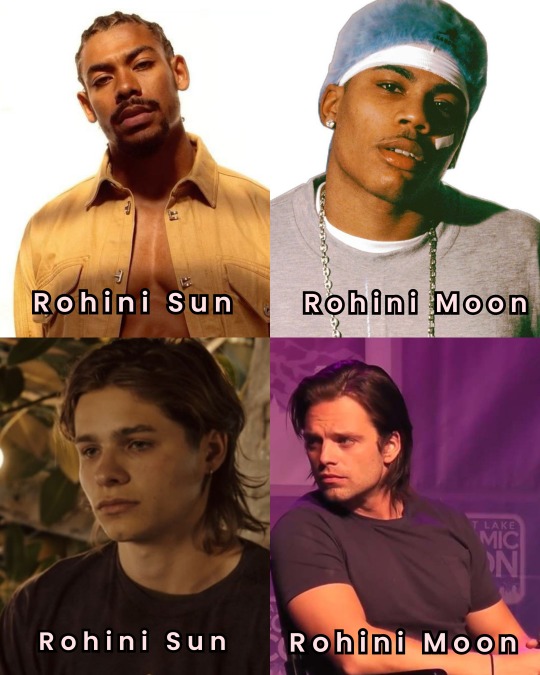























Additions so that I reach the picture limit.

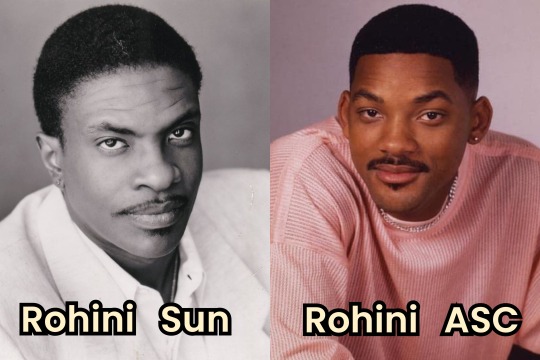

trine nakshatra pair.
#ashwini#bharani#krittika#rohini#mrigashira#ardra#punarvasu#pushya#ashlesha#magha#purva phalguni#uttara phalguni#hasta#chitra#swati#vishakha#anuradha#jyestha#mula#purva ashada#uttara ashada#shravana#dhanistha#shatabhisha#purva bhadrapada#uttara bhadrapada#revati#vedic astrology#sidereal astrology#vedic observations
442 notes
·
View notes
Text
Future Spouse Based on Nakshatra - Pt. Two
Please read the following for accuracy:
Check for which nakshatra of your dakarkaka.
You may want to check the nakshatra of your Venus (for wife) and Jupiter (for husband) as well.
You may want to read for your moon & AatmaKaaraka nakshatra to see if the traits apply to you.
DISCLAIMER: Keep in mind accuracy is influenced by the ENTIRE natal chart.
PUNARVASU:
General Neutral traits:
Big lips esp lower. Long face - Oval or Oblong. Doe eyes. Larger facial features generally.
Friendly - easily connect with others.
Nurturing. Patient. Quiet. Kind. Considerate.
Likely religious. Stick to their morals over money. Sometimes have traditional values & dreams for the future.
Good communicators.
Negative traits:
Modern society may harshly judge one’s disinterest in materialism. If the disinterest is extreme, this person can have periods of life where they seriously struggle financially.
Some may feel they are so caring that they become suffocating to loved ones.
ARDA:
General Neutral traits:
Bold eye colour. Pointy chin. Often, fit due to their job requiring physical activity (ex: lots of walking)
They can prefer physically working - they may have physical hobbies.
Good memory. Curious person - open to learning/exploring more.
Generally, an honest person.
Negative Traits:
They can be impolite. Or anti-social to a point where they sometimes appear rude.
Like to indulge - must watch for overspending/overindulging in bad foods or bad habits.
Spend early life only looking out for themselves. Later in life, they undergo transformation to change for the better. Become more compassionate and religious/spiritual after a traumatic event.
MULA:
General Neutral traits:
Often the most conventionally attractive in their family. Full lips. Small almond shaped eyes.
Clever. Good communicators.
Gain a good amount of wealth. Live comfortable.
Adventurous yet cautious.
Determined to reach their goals.
Negative traits:
Can be too focused on their goals. Neglect themselves and others until they see success. Others work and help is not always appreciated.
Self-destructive habits need to be broken. A few EXAMPLES: Stubborn to the point of being arrogant. Some have issues with lust & greed. Some have issues with anger.
MAGHA:
Full lips. Dramatic eyes - can have dark circles, bold eye colour or big eyes. May appear tired. Innocent looking.
Often well liked. Likes attention. Entertaining person. Funny, witty, good at conversation.
Optimistic. Generally, stays true to their word - reliable.
Generally, gains moderate to high levels of wealth.
Negative traits:
Hot temper. Prone to feeling jealous.
Ego can be a problem.
Subconscious superiority complex when born into wealthy family. When wealth is gained themselves, they feel still feel superior but not as arrogant.
SWATI:
General Neutral traits:
Large eyes. Innocent looking. Youthful appearance. Close set eyes are likely. Prominent chin.
Independent. Good morals. Honest. Disciplined
Friendly. Optimistic. Persuasive communication.
Negative traits:
Disinterested in their family origins. This can change later in life when they have their own family.
Must learn to not over indulge - over spend/overdo.
Prone to isolate themselves due to being focused on their own personal goals/desires.
CHITRA:
General Neutral traits:
Attractive. Commonly, have dimples. Prominent front teeth. Well groomed. Good style. Conventionally attractive.
Charismatic. Social. Independent.
Well educated. May not be formally. They may seek out good literature & art. They can enjoy philosophical ways of thinking.
Usually are a younger sibling or an only child.
Negative traits:
Vain. Can be overly worried about body and style. Can overthink in general.
Observant nature makes them very critical of everyone. Ego can be a problem.
Well known. But very few true friends. Many friends turn into enemies throughout their life.
Sometimes there can be issues related to fertility in these people’s lives.
PUSHYA:
General Neutral traits:
Prominent eyebrows. Medium to wide set eyes. Generally attractive. Unique looking.
Generally, likeable. Polite. Prone to over-talking, not listening. Intuitive. Intelligent. Helpful.
Generous & Compassionate. Stands up for people. Stands up for what they believe in.
Negative traits:
Sensitive. Often view themselves as a victim. Making it difficult to accept criticism & move forward in life.
Insecurities make them doubt their self worth.
UTTRA ASHADHA:
General Neutral traits:
Strong jawline. Often hooded eyes. Long nose.
Disciplined. Hardworking. High goals. Optimistic. Generally, appear modest.
Good communicator. Popular. Often gain respect&influence at a later age.
Confident. Independent.
Good in leadership roles. & interest in helping others - social causes.
Negative traits:
Over indulgent.
Prone to overthink/anxious.
Will experience relationship struggles - often many relationships before finding the correct person for them.
UTTARA BHADRA:
General traits:
Attractive. Ethereal look. Innocent look. Wide to medium set eyes. Sharp jawline. Thin to medium lip. Strong bone structure.
Deeply empathetic but may not express it.
Strong & silent type. Have the ability to control their emotions - will do what is best for the family. As a result, often benefit from other people's money & resources - ex: inheritance or gifts.
Disciplined & hardworking. As a result, make a good level of wealth.
Rational. Good at giving advice. Stays neutral.
Generous person - often have good karma, it said they will defeat any haters/enemies.
Negative traits:
Struggle to express oneself can leave one feeling lonely & isolated. Repressed emotions can lead to emotional outburst later in life.
May unintentionally create many enemies throughout their life.
ANURADHA:
General traits:
Bunny teeth. Tall & muscular. Innocent looking. Generally attractive.
Independent & Confident. Often feel a strong sense of purpose. Determined & hardworking.
Passionate & protective. May be married to their achieving their “purpose” though.
Often desire a partner that is similarly hardworking & passionate about their work/goals.
Negative traits:
Requires to learn balance in their life. Can be overindulgent - potential examples: can enjoy gambling or unhealthy foods.
May have a slight controlling & possessive nature.
Worry a lot. Could experience periods of having difficulty managing anxiety throughout their lives.
ASHWINI:
General traits:
Full cheeks - often have a baby face through their 20s. Cute. Bold eye colour. Youthful.
Idealistic. Independent.
Adventurous. Youthful energy. Humorous. Often joyful.
Nurturing nature. Deep love for family.
Does well financially. Action orientated.
Negative traits:
Vengeful. Doesn’t forget or truly ever forgive. Many relationships turn sour throughout their life.
Impulsive. Short tempered.
#astrology observations#astrology#vedic astro observations#vedic astro notes#vedic astrology#nakshatras#punarvasu#arda#mula#mâcha#swati#swati nakshatra#chitra nakshatra#pushya#uttara ashadha#uttara bhadrapada#anuradha#ashwini
911 notes
·
View notes
